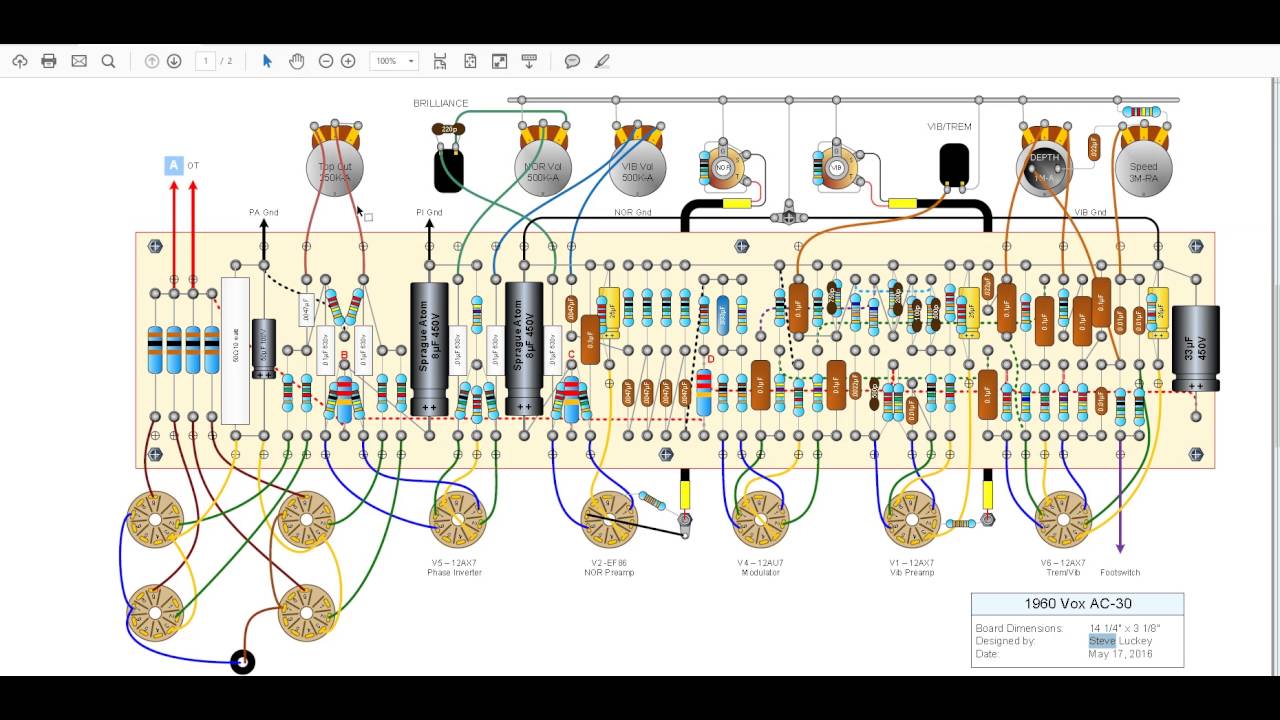
However, Vox would not develop their Top Boost tone circuitry from sample circuits found in the back pages of a tube manual nor was the Top Boost circuit a unique JMI design. Dick Denney doubtlessly consulted these books when designing the circuitry for Vox amplifiers. The RCA Receiving Tube Manual was a US publication but Mullard offered a similar book in the UK. It also offered schematics of sample tube circuits for developmental purposes.

The RCA Receiving Tube Manual published the electronic specifications for all of the tubes RCA produced in the era. When designing circuitry for their products, guitar amplifier manufacturers often referred to books such as the RCA Receiving Tube Manual. It was apparent that an active tone control circuit with separate bass and treble controls would need to be developed for the "Brilliant" channel of the AC-30/6. By this time, Fender included active treble and bass controls with most of their amplifiers, a feature not yet included on any Vox model. Led by the UK instrumental group "The Shadows," many British guitarists were asking for more treble response from their AC-30/6 amplifiers. The Tone control affected all three channels of the AC-30/6. The Tone control combined these treble frequencies, passively reducing treble output from the amp as the "out of phase" treble signals canceled each other out. However, the treble frequencies coming from the opposing sides of the inverter circuit were first directed to the Tone control. These opposing signals were supplied to each half of a "push-pull" amplifier stage. The phase inverter (more properly called the "phase splitter") divided the output from the preamp into two signals 180 degrees out of phase with each other. The signal coming from the preamp was directed to the phase inverter tube.

It was located in the power amp circuitry between the phase inverter and output tubes. This tone circuit wasn't located, as one might expect, in the preamp area. Vox introduced their first amplifier lineup in the late 1950's and early 1960's.Īs was common for amplifiers designed in this period, the original Vox AC-4, AC-10, AC-15 and AC-30 models were equipped with a primitive single control tone circuit to roll off treble response.


 0 kommentar(er)
0 kommentar(er)
